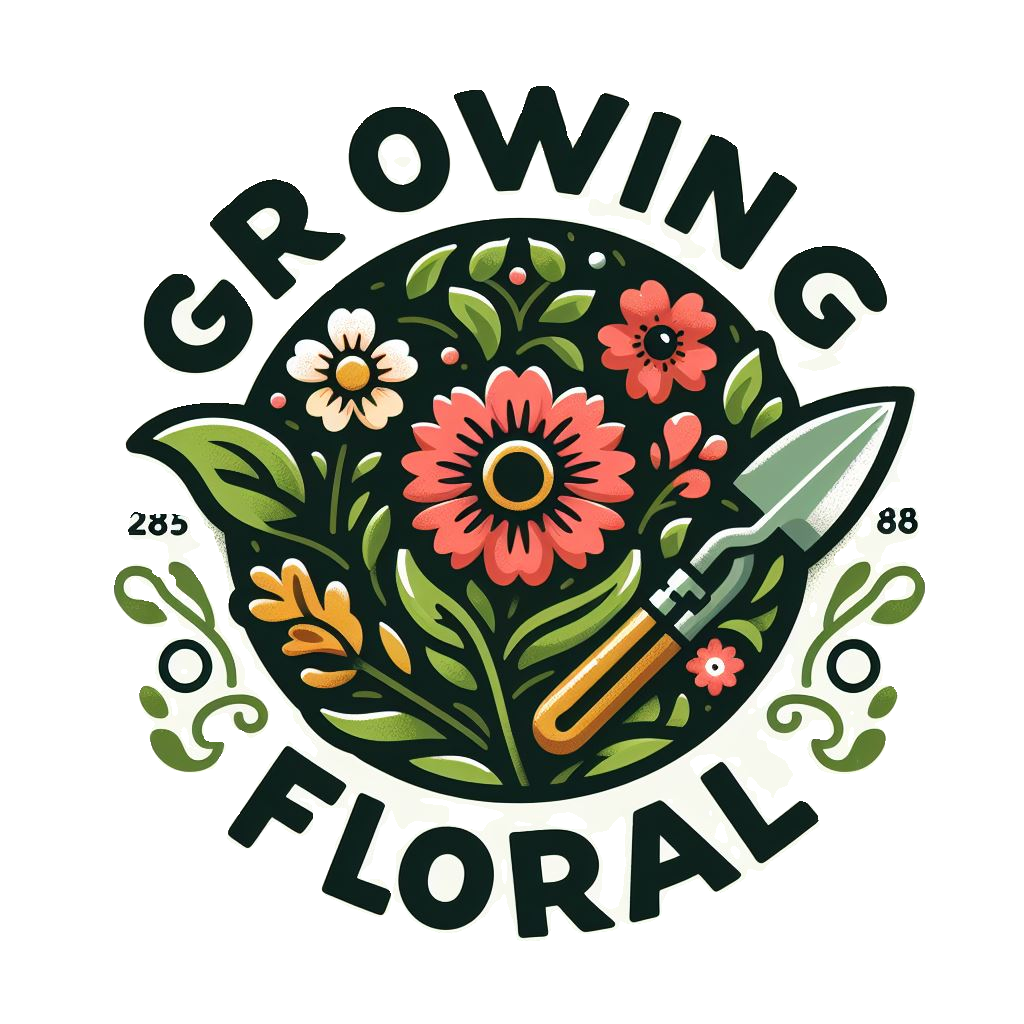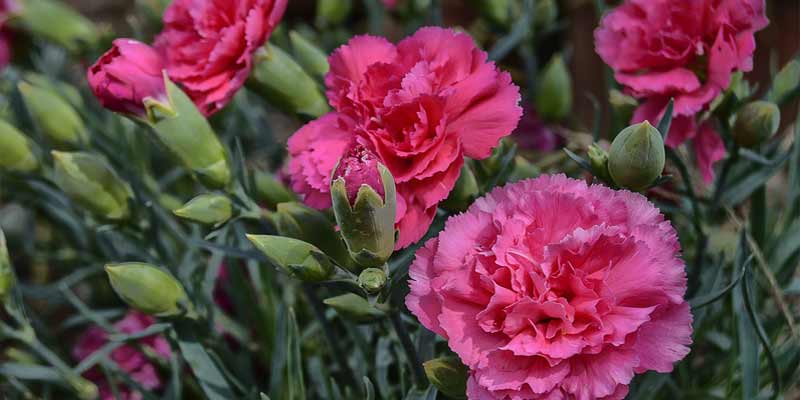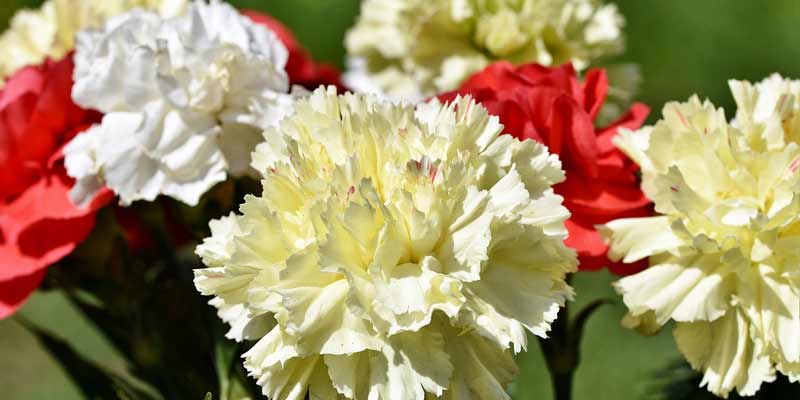With their vibrant colors and delicate petals, carnations have been captivating gardeners and flower enthusiasts for centuries; they are indeed perennial favorites in the Dianthus genus—boasting a rich history of cultivation as well as symbolism. To harness their beauty and guarantee a spectacular display of flowers, one must understand the bloom cycle peculiar to carnation blooms.
This article delves into the complex process of carnations’ blooming, examining thoroughly the factors that wield influence over their flowering.
The Nature of Carnations
Understanding the nature of these charming flowers, the carnations, and herbaceous perennial plants native to the Mediterranean region, particularly their blooming timing is an essential first step. Thriving in well-drained soil and temperate climates, they are celebrated for their fragrant blossoms; a diverse array presents itself with colors such as reds, pink, whites, and even yellows.
5 Factors Influencing Blooming Time
Understanding the crucial factors that influence the timing of carnation blooms is imperative for predicting and optimizing their flowering period; these factors include:
1. Variety of Carnation
Carnations exhibit a variety in bloom times, based on their different varieties. Breeders intentionally manipulate some cultivars to showcase earlier or later seasonal blooms; conversely, certain types may continuously flower throughout the entire growing season.
2. Climate and Geographic Location
The climate and geographic location where carnations grow influence the timing of their blooms. Carnations in regions characterized by mild winters and moderate temperatures might bloom earlier during springtime. Conversely, in colder climates, flowering may occur later in the season.
3. Day Length and Photoperiod
Carnations exhibit sensitivity to day length variations, a phenomenon termed photoperiodism. Longer days abundant with sunlight are the conditions that incite flower bud formation and initiation, an intriguing manifestation of nature’s influence on botanical life. Conversely, shorter days trigger vegetative growth and inhibit flowering.
4. Temperature and Weather Conditions
The flowering of carnations undergoes significant regulation by temperature. Blooming may experience delays during the growing season under cool temperatures, whereas excessively hot weather can provoke premature wilting in flowers. Consistent, moderate temperatures promote optimal flowering.
5. Cultural Practices
Proper care and maintenance, specifically fertilization, watering, and pruning can actively manipulate the blooming time of carnations. By providing adequate nutrients and water while concurrently removing spent flowers, one encourages continuous blooming throughout a given season.
Blooming Seasons of Carnations
Throughout the growing season, carnations bloom remarkably with a vibrant and extended display of colorful flowers. Various factors may influence the specific blooming seasons for carnations; however, they generally adhere to these patterns:
Spring Blooms
The arrival of warmer weather and longer days receives a herald from many varieties of carnations, blooming profusely in spring. These spring-blooming carnations frequently yield an abundance of flowers on robust stems; thus, they emerge as favored options for both garden borders and floral arrangements.
Summer Blooms
Carnations, as the days lengthen and temperatures rise, indeed continue to bloom prolifically throughout the summer months; they can produce a steady stream of flowers into late summer with proper care, regular watering, and deadheading included in their maintenance routine.
Fall Blooms
Certain varieties of carnations might undergo a reemergence in blooming activity during autumn, particularly within regions characterized by temperate autumns and elongated growing seasons. As temperatures commence their descent, these fall-blooming carnations inject gardens and landscapes with vibrant color.
Certain varieties of carnations may sporadically bloom during the winter months in warmer climates or protected environments. Yet, in colder regions, these same carnations usually experience a dormancy phase throughout the winter; their flowering only recommences come springtime.
Maximizing Carnation Blooms
Consider the following tips to optimize carnations’ blooming potential and guarantee a vibrant flower display:
Choose the Right Variety
Select carnation varieties, well-suited to your climate and growing conditions; consult local nurseries or gardening experts, they will provide recommendations on suitable cultivars.
Provide Optimal Growing Conditions
Plant carnations in soil that is well-drained, and enriched with organic matter; ensure they receive abundant sunlight and water, this will provide optimal growing conditions. Further to this: mulching around the base of your plants not only aids in moisture retention but also regulates soil temperature.
Engage in Regular Maintenance
Deadhead the spent flowers for an ongoing bloom and to deter seed formation; Prune leggy or overgrown stems, this will foster denser growth, enhancing air circulation around your plants.
Monitor for Pests and Diseases
Vigilantly observe common pests and diseases, aphids, spider mites, powdery mildew, etc. that could potentially harm carnations. Swiftly detects and treats any infestation or infection; this preventive action not only forestalls damage to plants but also sustains their blooming vigor.
Consider Container Gardening
Carnations, with their ability to flourish in containers, prove ideal for patio spaces; balconies, and even small gardens. Select containers possessing sufficient drainage holes and employ a potting mix tailored specifically for flowering plants that exhibit excellent drainage characteristics.
Conclusion
Essential to the cultivation of timeless carnations, is an understanding of their blooming season; this knowledge allows one to enjoy these beautiful flowers throughout a growing period. By taking into account factors – variety, climate, and cultural practices – gardeners can optimize when their carnations bloom: thus creating stunning displays in gardens or landscapes.
A profusion of fragrant blossoms is the reward enthusiasts receive from properly cared-for carnations; they enhance outdoor spaces with enduring charm and elegance—a testament not only to nature’s beauty but also to human attention.



Leave a Reply